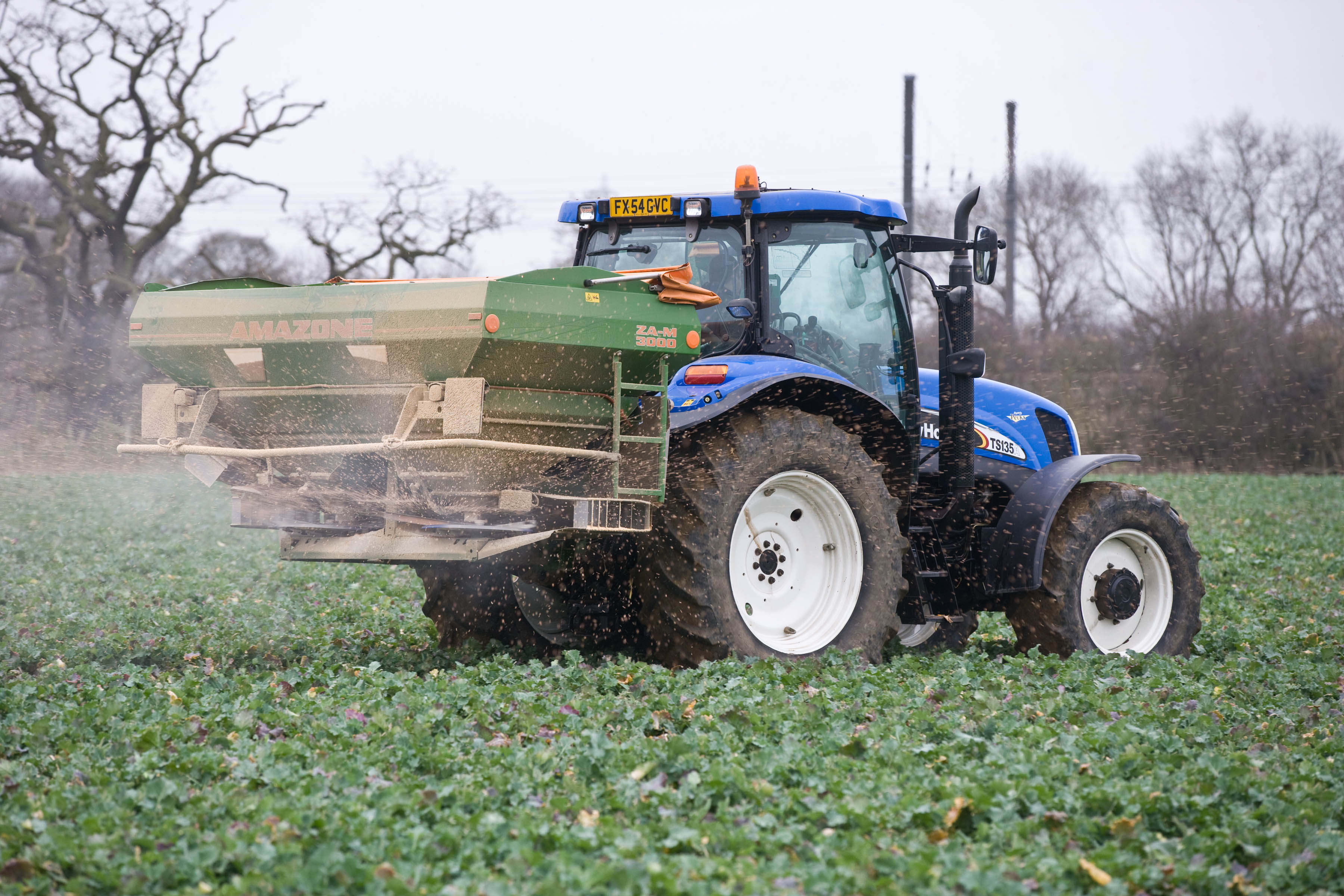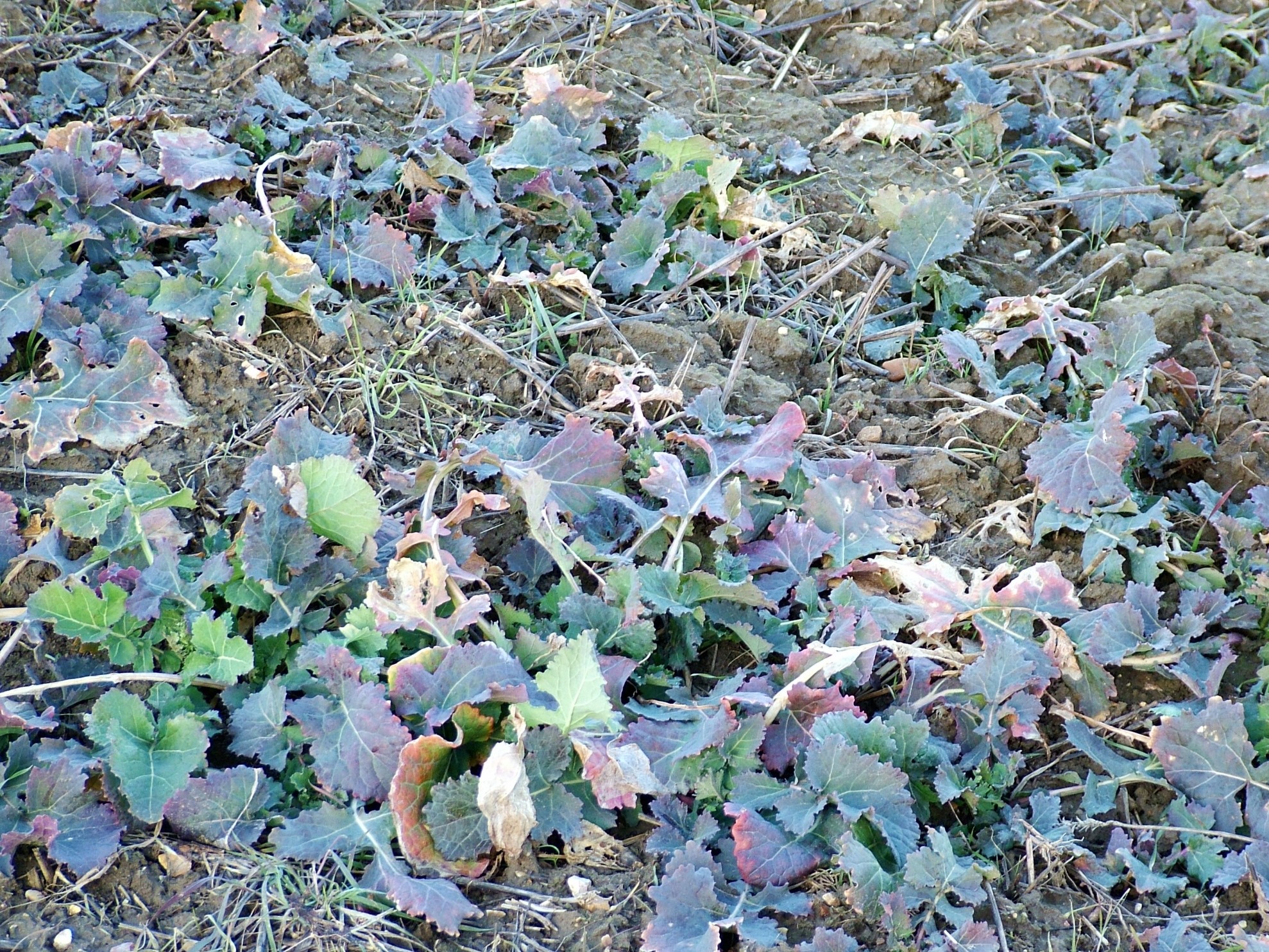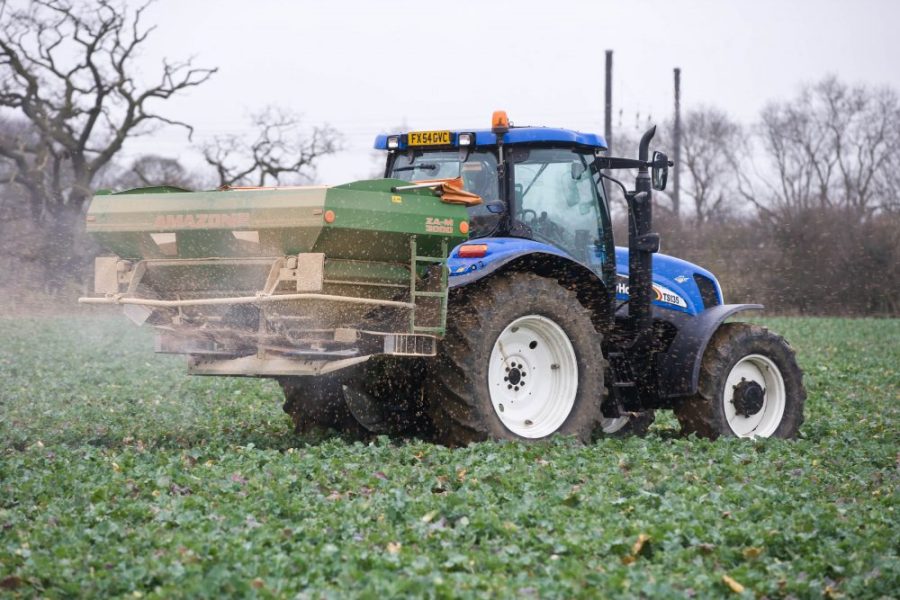
Oilseed rape can be a notoriously unpredictable crop to grow, but bespoke agronomy combined with the latest precision management software is helping growers manage this variability. CPM hears how three agronomists are tackling regional challenges.
You can’t be prescriptive or look at nutrition in isolation.
By Paul Spackman
Planning any oilseed rape nutrition strategy can often prove something of a headache. Winter canopies may resemble anything from fields of cabbage to sparse areas that struggled to establish or have been hit by slugs, pigeons, or flea beetle. The old adage of ‘every field is different’ is frequently used by experts, but for OSR, where yields can vary from less than 1t/ha to 6t/ha within the same field, it holds particular significance.
Spring nitrogen rates and timing remain one of the most effective ways to manipulate canopy growth, but effective nutritional strategies need to account for all causes of crop variability, incorporating multiple layers of information.

Omnia makes it easy to map crop differences in the field and create variable application plans if required.
That is where the Omnia precision farming software can really make a difference, according to agronomy group Hutchinsons. The system allows users to combine a raft of data across multiple years, including yield maps, nutrient sampling and soil analyses to generate accurate field management plans.
These can then be used to highlight in-field variations for many different factors, such as yield, pH, fertility, soil structure, allowing appropriate management techniques and inputs to be targeted more efficiently.
“You can’t be prescriptive or look at nutrition in isolation,” says Essex-based Farmacy agronomist Andrew Spackman. “Any nutrition strategy should first and foremost be based on a clear understanding of the underlying soil, including the nutrient balance left by the preceding crop, soil chemistry and biology. Omnia is a great tool for pulling all of this information together to identify patterns or trends.”
OSR’s variability is no more evident than in southeast England, where some crops struggled or were written off completely during the drought and flea beetle-affected 2016/17 season.
Last season’s difficulties are in stark contrast to the conditions encountered to date by the crop currently in the ground, which has seen late July-sown crops after winter barley establish strongly in good, moist seedbeds. Some of the most forward OSR crops hit a Green Area Index (GAI) of more than 2.5 in Dec, points out Andrew.
“Essex is the driest county in the UK, so water availability makes all the difference. Soil type can also be incredibly variable, from heavy London clay to fine silty sands near the coast, and this affects how we manage crops.”
The calcareous soil and high pH (typically 7-8) can restrict phosphate availability, so where possible, placed DAP fertiliser with seed at drilling is key to getting crops off to a good start.
“Phosphate is very immobile in the soil, so has to be in the right place for young roots to access.” Any areas showing large deficiencies may also receive triple superphosphate (TSP) incorporated prior to sowing, while additional early spring phosphate supports further root development.
Potassium availability is not usually a problem on the potash-releasing clays, however a maintenance dose is still worthwhile in early spring, when plant requirement is at its greatest, he notes.
Monitoring P&K levels over successive years is one of the ways Omnia is helping Herefords agronomist Richard Watkins more accurately target OSR nutrition.
“Given the amount of livestock in this region, many clients regularly apply poultry or farmyard manures and traditionally a lot of straw has been removed. Omnia, alongside our own experience, is a good tool for tracking these additions against crop off-take to help ensure we’re only applying nutrients when and where they’re needed.”
OSR has a high demand for potash in the spring (potentially more than 12kg/ha/day according to Yara), yet the nutrient is very mobile in the soil. “This means fertiliser is best applied when crops are growing rapidly and taking up nutrients, rather than relying on autumn applications to meet crop demands,” he says.
He agrees with Andrew that additional phosphate can be worthwhile at the spring timing where required because of its role in root development. “Soil pH mapping based on rotational sampling every 4-5 years is particularly useful given the propensity for phosphate “lock-up” in more acidic soils. Omnia’s pH ‘traffic light system’ allows us to easily pick out areas of low pH and lime accordingly before fields go into OSR.”
The advanced nature of many OSR crops this spring is likely to prompt growers to delay or reduce early nitrogen applications to avoid excessive canopy development and meet the target GAI of 3.5 by flowering.
Where there are poorer areas of growth, accurately target treatments to individual fields or even areas within the same field, advises Hutchinsons agronomist George Robson, based in Northumbs.
“There will inevitably be areas that have been sown later, not established as well or have been grazed harder over the winter. These may well require earlier nitrogen, or higher rates to boost growth and improve crop uniformity.”
Omnia makes it easy to map this type of variability and create variable application plans if required. “There are still a lot of farms without the capability for variable applications, but I can see that’s where the future is going, particularly as equipment comes up for replacement.”
George favours a three-way split of nitrogen, with approximately one third applied in the first dose as soon as crop growth resumes after winter, around 40% at early stem extension and the remainder as late as possible in the season to aid pod development and maximise green leaf duration into the summer.
“It all comes down to crop rooting though. If OSR establishes well in the autumn and has a strong root system, recovery of nitrogen and other nutrients is much better. Good establishment relies on a number of management factors, which is where Omnia is a good way of bringing these together.”
Spring nitrogen requirements are based on Soil Mineral Nitrogen (SMN) tests from samples taken during Jan, combined with GAI assessments made in early Feb, after the main period of winter kill. These tests show how much nitrogen is available in soil and the amount already taken up by plants.
All of this information can be recorded in Omnia to tailor in-season decisions, and also build a longer-term nutritional profile for individual fields, he notes.
Nitrogen fertiliser requirements take account of the optimum nitrogen amount for yield (estimated to be around 220kgN/ha from dose response trials) and the fact that crops use around 50kgN/ha to put on one GAI unit. Application rates are then adjusted according to the uptake efficiency of applied fertiliser, which is typically around 60%.
“Given the lack of rain in the East we usually aim to apply a fair amount early while there’s sufficient moisture, however this season might be different if crops remain very forward,” notes Andrew.
Late nitrogen is increasingly seen as a useful way of boosting pod development and prolonging crop greening into the summer, but the latest timing is restricted by crop growth and the ability to safely travel through the crop.
Slow release nitrogen products applied earlier in the season can help mitigate this issue and still extend nitrogen availability, says Richard, who has seen promising results from products such as Efficient-28 applied with the sclerotinia spray.
“We’ve seen incidental benefits to yield and oil content and have found slow-release products to be particularly useful where early nitrogen rates have been reduced to manage canopies, which often means there’s a bit more in the budget for late nitrogen.”
OSR is sensitive to sulphur deficiency, so it’s vital enough is applied in time for the peak demand during stem extension, usually with the first nitrogen dose, he notes.
“Although manures are used widely in this region, sulphur can be readily lost over the winter, so we have to ensure early spring applications meet crop requirements. Typically we’re applying 70-80kg/ha as a minimum.”
Andrew favours DoubleTop as the first spring nitrogen/sulphur application, followed by ammonium nitrate at the second split.
All three agronomists urge growers not to overlook the importance of micronutrients and trace elements. Those of most importance for OSR are boron, manganese, molybdenum and magnesium, says Andrew, who believes regular tissue testing is a worthwhile way of highlighting any issues before symptoms appear.
Boron, manganese and molybdenum are best applied as foliar treatments at the early stem extension phase, which often coincides with a light leaf spot top-up spray. Magnesium can be left until the later timing and may be included with a second sclerotinia spray, he suggests.
Tissue testing is typically conducted early in the season (around the first nitrogen timing) using leaf samples from fresh spring regrowth, with lab results typically available in 10 days to a fortnight. This can make timings quite tight to influence decisions early in the same season, but regular testing across different seasons will help build a valuable picture of common issues throughout the rotation and ultimately benefit future crops, he says.
“Once you see a deficiency symptom, you’re likely to have already lost some yield potential,” adds Richard, who says not testing for micronutrients risks leaving growers effectively ‘flying blind’. “Over time, regular testing will build a picture of what individual fields are short of.”
Tissue and seed analysis carried out as part of George’s involvement with the oilseeds Yield Enhancement Network (YEN) highlights calcium, zinc and boron as key nutrients to focus on in his region that could help narrow the gap between estimated yield potential at 8-12t/ha and farm yields, the best of which are around 6t/ha.
“We’ve also found that because our soils are naturally high in magnesium, this can cause potassium lock-up, which means potash can be limited.”
With environmental regulations likely to get tighter in future and putting farmers and agronomists under more pressure to justify their actions, one of the key benefits from Omnia is its ability to record the rationale behind management decisions over multiple years.
For Richard, who has a large proportion of his area within Nitrate Vulnerable Zones (NVZs), the in-built “checks and balances” already act as a particularly useful additional support tool for meeting NVZ requirements, he comments.
“Precision farming tools such as Omnia are not designed to replace the knowledge and experience of farmers and agronomists, but to support the decision-making processes and bring management data together to allow us to make more informed decisions,” adds Andrew.
“There’s already more focus on recording what we do and it’s only a matter of time before we see more restrictions, particularly around nutrients such as phosphate,” he concludes.
Look out for TuYV symptoms this spring
Last autumn, 70% of peach-potato aphids were reported to be carrying Turnip Yellows Virus (TuYV). The disease can be difficult to diagnose, with typical symptoms – such as reddening or purpling around the margins of the leaves – also seen in crops when they’re under stress, or with trace element deficiencies. Those factors can end up being blamed for the loss of yield, while the TuYV goes untreated, so it can be a hidden yield robber, warns Agrovista’s Mark Hemmant.
BBRO’s Dr Mark Stevens agrees that misdiagnosis can be a problem, especially since there is a time lag between the initial infection and the symptoms appearing in the crop. “You may get infection in the autumn, but it might not show in the crop until the following March or April. So if you find TuYV in your OSR this spring, you need to watch for further migration this year and be vigilant for virus infection in future crops.”




